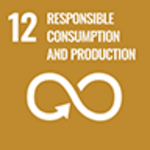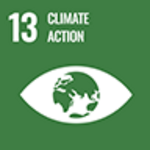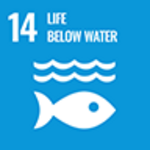

ProfessorTetsuya Takatsu
Affiliation: Graduate Faculty of Fisheries Sciences / Graduate Graduate School of Fisheries Sciences (School of Fisheries Sciences Department of Marine Biological Sciences)
Specialized field: fish ecology, fisheries resource science, fisheries oceanography
Keywords of research: Fishery resource research, resource change, climate change, early life stage, training ship
Alma mater: Tokyo Metropolitan Fuji High School
Final academic background: Graduate School of Fisheries, Hokkaido University
HP address: http://www2.fish.hokudai.ac.jp/faculty-member/takatsu-tetsuya/?key=jp
*This article was originally published in the 4th issue of "Frontiers of Knowledge" and has been re-edited for the web.
Why do catches fluctuate?
Haven't you seen the news such as "Rapid increase in sardine catches! Poor catch of saury! Is it because of global warming?" In fact, the mechanism of changes in fish stocks is still largely unknown. I am working on clarifying the causal relationship between climate change (marine environmental change) and changes in fish stocks.
High mortality rate of eggs, larvae and juveniles (early life stages) and overfishing are causes of stock decline
 The causes of resource decline are purely natural phenomena, overfishing by humans, and the simultaneous occurrence of both. Here, we will introduce a research example of sand eels in Mutsu Bay, Aomori Prefecture, where a large amount of snowmelt water reduced resources. Mutsu Bay has a spawning ground for sand eels at the mouth of the bay, and the larvae hatched around February disperse in the western bay of Mutsu Bay where they live a plankton life. After that, in May, when they grow into juvenile fish that closely resemble their parents, they will live on the sea floor from the west side of the west bay to the mouth of the bay during the daytime (Fig. 1). The fishing boats turn on the lights at night and scoop up the juvenile fish that surface with nets to catch them. These fry are also called kounago, dried in the sun and shipped as kounago no chirimen, which is sweetened in the Kansai region. Sand eels reach maturity between 2 and 5 years old, and each female lays 22,000 to 66,000 eggs each year. Of these eggs, if one male and one female survive fishing and become adults without natural mortality and participate in spawning, the sand eel resource should be able to be maintained. Calculated from the number of eggs laid, the survival rate is 0.0031 to 0.0089%, which is as low as winning the lottery. The period of greatest mortality is during the small and vulnerable eggs, larvae and juveniles (early life stage). Therefore, if humans carefully nurture them in land-based aquaculture facilities during this period and then release them when they reach a large size with a low mortality rate, they should survive in large numbers and have more parents. This is the reason why "seedling release is effective". However, seed release is time-consuming and costly (electricity, labor, feed, facility maintenance, etc.), so it is only done for large-growing fish and high-end fish. "Complete aquaculture", which raises fish from fertilization to adulthood on land, is more expensive, so it is only done for high-end fish such as pufferfish, flounder, and sturgeon. Sand eels are inexpensive, so we do not release seedlings or complete aquaculture.
The causes of resource decline are purely natural phenomena, overfishing by humans, and the simultaneous occurrence of both. Here, we will introduce a research example of sand eels in Mutsu Bay, Aomori Prefecture, where a large amount of snowmelt water reduced resources. Mutsu Bay has a spawning ground for sand eels at the mouth of the bay, and the larvae hatched around February disperse in the western bay of Mutsu Bay where they live a plankton life. After that, in May, when they grow into juvenile fish that closely resemble their parents, they will live on the sea floor from the west side of the west bay to the mouth of the bay during the daytime (Fig. 1). The fishing boats turn on the lights at night and scoop up the juvenile fish that surface with nets to catch them. These fry are also called kounago, dried in the sun and shipped as kounago no chirimen, which is sweetened in the Kansai region. Sand eels reach maturity between 2 and 5 years old, and each female lays 22,000 to 66,000 eggs each year. Of these eggs, if one male and one female survive fishing and become adults without natural mortality and participate in spawning, the sand eel resource should be able to be maintained. Calculated from the number of eggs laid, the survival rate is 0.0031 to 0.0089%, which is as low as winning the lottery. The period of greatest mortality is during the small and vulnerable eggs, larvae and juveniles (early life stage). Therefore, if humans carefully nurture them in land-based aquaculture facilities during this period and then release them when they reach a large size with a low mortality rate, they should survive in large numbers and have more parents. This is the reason why "seedling release is effective". However, seed release is time-consuming and costly (electricity, labor, feed, facility maintenance, etc.), so it is only done for large-growing fish and high-end fish. "Complete aquaculture", which raises fish from fertilization to adulthood on land, is more expensive, so it is only done for high-end fish such as pufferfish, flounder, and sturgeon. Sand eels are inexpensive, so we do not release seedlings or complete aquaculture.
How did you do your research?

Figure 2. Environmental factors affecting the body weight of floating sand eel larvae in Mutsu Bay (modified from Nanjo et al., 2017)
Using the Ushio Maru, a training vessel attached to School of Fisheries Sciences Hokkaido University, and a local fishing boat, we collected sand eel larvae and their prey plankton with plankton nets, and measured seawater density, water temperature, and salinity with a device called CTD every two weeks. I looked into it for 3 years. Fig. 2 shows the causal relationship between them analyzed by multiple regression analysis called path analysis. For both body length classes, when the difference in seawater density between 5 m and 35 m water depths is small, that is, when the inflow of snowmelt to the surface layer of Mutsu Bay is small, vertical mixing in winter is promoted and prey species increase. It was found that the lower the temperature of the water, the more food they ate, and at 6 mm and 10 mm in body length, they accumulated nutrients and became fat. This result is also reflected in the annual change in the mortality rate. The number of surviving fish was the lowest, and the catch decreased (Fig. 3). In other words, it is now possible to predict that the catch of sand eels needs to be reduced in years when there is a lot of snowmelt.
what to do next
In addition to sand lance, I have also conducted research with students on the mechanisms of resource fluctuations in various marine fish species such as Pacific cod, flathead flounder, sow bee, marbled flounder, and flathead flounder. As a result, in addition to the amount of snowmelt water, amount of feed, and water temperature introduced here, various factors such as the number of natural enemies, the strength of seasonal winds, and the strength of warm currents affect resource fluctuations for each fish species. It turns out that It was also found that even for the same fish species, if the spawning ground changes, the factors that affect it also change. I would like to continue to investigate factors that cause annual fluctuations in larval mortality for various fish species and spawning grounds, and to propose appropriate measures to prevent overfishing.

Fig. 3. Relationship between the density of floating sand eel larvae in Mutsu Bay and the subsequent catch of juveniles. Although 1999 had the highest density of larvae in the three years, the number of individuals that survived to juveniles was the lowest and the mortality rate was high. 2001, on the contrary, had a low mortality rate.
Reference book
- Kingo Ito. "Fishing ban on sand eels around Mutsu Bay," Aomori Prefectural Fisheries Research Information, "Water and Fishing," (Government) Aomori Prefectural Industrial Technology Center, Hiranai-cho 13: 6 (2013)
- N. Nanjo, T. Takatsu, K. Imura, K. Itoh, Y. Takeya, T. Takahashi. "Feeding, somatic condition and survival of sand lance Ammodytes sp. larvae in Mutsu Bay, Japan" Fish. Sci. 83: 199-214 (2017). DOI: 10.1007/s12562-016-1054-0



















